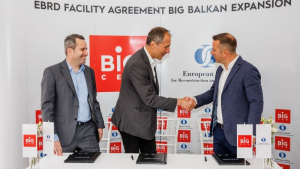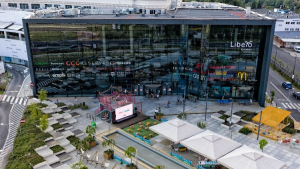
Occupier activity set an all-time high on the Polish industrial market in the first three months of 2018, which pushed the country’s vacancy rate down to its lowest on record. Demand came mostly from e-commerce (24%), logistics operators (23%) and retailers (19%). Cushman & Wakefield presented a summary of the first quarter of 2018 on the Polish warehouse and industrial market.
At the end of Q1 2018, Poland’s total warehouse and industrial stock stood at 13.9 million sqm following the delivery of 388,000 sqm to the market in 12 projects. Central Poland led the league table for new supply with 213,000 sqm completed, including phase one of the Central European Logistics Hub in Łódź (79,000 sqm for BSH Sprzęt Gospodarstwa Domowego). Other leading markets in terms of new supply were Szczecin (52,000 sqm), Warsaw Suburbs (33,000 sqm), Western Poland (33,000 sqm) and Krakow (31,000 sqm).
“At the end of the first quarter there was 1.91 million sqm of warehouse space under construction in 56 projects across Poland. This was the largest ever quarterly development pipeline of which nearly 75% was secured with pre-lets. The highest concentration of development activity was in Upper Silesia, Central Poland, Western Poland and Warsaw Suburbs, accounting for 64% of space under way,” said report author Adrian Semaan, Research Consultant, Industrial & Logistics Agency at Cushman & Wakefield.
Leasing activity remained robust in the first quarter of 2018 with warehouse take-up reaching more than 1.18 million sqm, the best first-quarter performance on record. Occupier interest focused on Poland’s core warehouse markets, including Central Poland (20% of all deals), Warsaw Inner City and Suburbs (18%), Poznań (12%), Upper Silesia (11%) and Wrocław (9%). New lease agreements and expansions accounted for 80% of the leasing volume while renegotiations made up the remaining 20%. Demand for warehouse space came mostly from e-commerce (24%), logistics operators (23%) and retailers (19%). Other leading sectors included manufacturing (5%), pharmaceuticals (4%), the automotive sector (3%), household appliances (3%) and electronics (3%).
At the end of Q1 2018, Poland’s vacancy rate fell to 4.7%, the lowest since 2004. Logistics facilities in Szczecin, Western Poland and Bydgoszcz-Toruń were fully let. The lowest vacancy rate of 1.9% was recorded in Central Poland, while the highest were in Krakow (11.1%) and Warsaw Inner City (8.5%).
Effective rents edged up by an average of €0.10/sqm/month in Q1 2018 as landlords enjoyed the upper hand in lease negotiations due to low vacancy rates in top prime locations and rising development costs.
The highest headline and effective rents, the latter being lower due to financial incentives, are in Warsaw Inner City standing at €4.00–5.25/sqm/month and at €3.50–4.80/sqm/month, respectively, and in Krakow – at €3.50–4.50/sqm/month and €2.60–4.00/sqm/month, respectively. On the other markets, headline rents are €2.40–3.60/sqm/month while effective rents range between €1.90–3.20/sqm/month.
Looking ahead into 2018, the Polish leasing market is expected to remain buoyant, fuelled by the expansion of e-commerce generating ever stronger demand for warehouse space and specialised logistics services. Logistics parks and BTS schemes located close to key transportation routes and hubs are expected to continue to dominate the development market. Development activity is also projected to pick up in the segment of smaller urban logistics facilities needed for last mile delivery. Such projects will enable faster and more efficient order fulfilment for a growing e-commerce customer base, and are likely to break ground in Warsaw, Wrocław, Łódź and Szczecin.



